Uganda’s economic indicators spell better conditions for the private sector and business compared to other countries in the region, according to an expert study, the Africa Trade Barometer (ATB). Uganda’s overall macroeconomic conditions are “average with a slight positive outlook relative to the other countries in the Stanbic Bank Africa Trade Barometer.”
“As such, Uganda’s macroeconomic conditions have a moderate to positive impact (neither too positive nor too negative) on its overall tradability attractiveness,” says the just-issued report, courtesy of the Standard Bank Group.
The favorable conditions cited include the economy and the growing foreign direct investments (FDI) net inflows, which have been recovering from the worst effects of the COVID-19 pandemic and a relatively low inflation rate, compared to other countries covered by the ATB.
While these factors have had a positive impact on the country’s tradability attractiveness, there are other variables that have had a negative impact, according to the report. These include merchandise trade, which still forms a relatively small portion of Uganda’s GDP and thereby signals a low level of trade openness as well as a low share of exports as a percentage of GDP.
It adds that although businesses in Uganda are optimistic about the future performance of their economy, Uganda’s business confidence score of 57 remains slightly below the average of 58 for SB ATB markets. The positive outlook adopted by Ugandan businesses arises from the expected positive economic growth rate that is relatively higher than the average for Sub-Saharan Africa.
The weaknesses of the country as a business destination include the kind of infrastructure which businesses gave a low score of 35 out of 100, compared to the average of 46. They think the infrastructure quality has deteriorated to “depletion levels”, particularly road and rail services, while power supply has also posed a significant obstacle to business operations and cross-border trade.
The study report however notes the efforts by the government to improve infrastructure. “To address these challenges, the Ugandan Government has been prioritizing the upgrading of transport infrastructure in the country. The government has also committed to the construction of the standard gauge railway (SGR) to connect Kampala with Kenya and provide direct access to the seaport of Mombasa.
Aaron Akampa, the Head of Enterprise Banking at Stanbic Bank says while there are efforts going on, the government needs to be faster on infrastructure projects so as to make SMEs comfortable.
In addition to poor infrastructure, businesses identified high tariffs, lack of market knowledge, and import/export bans as key obstacles to their cross-border activities. Compared to the September 2022 survey, the proportion of businesses that find it difficult to trade with other African countries increased by eight percentage points to 48 percent.
“As a result, Uganda’s ease of trade index score decreased from 42 in September 2022 (and position 6 out of 10 countries) to 38 in May 2023, causing the country to rank 10th, a drop by 4 positions”. On over demands to the government, the Uganda traders asked for the lowering of taxes especially customs taxes, saying they pay more than their counterparts in other countries in terms of taxes.
However, in Kenya, Uganda’s largest trading partner, the traders there complained about the government’s inability to quickly tame the issue of foreign currency supply, which, according to them is making trade in the region hard. Doreen Kironde, Head of Trade Finance and Africa-China Trading, said there is a need for the two countries to work together closely to find solutions to the challenges that the traders face.
Despite several obstacles to trade, businesses are optimistic that cross-border trade will increase over the next few years. The majority of importers and exporters expect the scale of their foreign trade activity to increase. This is because they expect relations with established trade partners like China, Kenya, Rwanda and Tanzania to continue improving. And Philip Ssali, Head of Corporate Sales, Global Markets at Stanbic, said there is hope that the foreign exchange situation in the other countries in the region will stabilize, as the effects of the recent global shocks ebb.
The survey also revealed increasing awareness among the business community on the African Continental Free Trade Agreement, from 23 percent in September 2022 to 33 percent in May 2023. “Businesses expect that the implementation of AfCFTA will rectify some of the obstacles to trade they face by easing of the movement of goods and services across borders and providing a larger market for their goods and services,” the study revealed.
The SB ATB was launched in 2022 with the intent of creating Africa’s leading trade index to address the information vacuum of reliable African trade data and to support and enable the growth of intra-Africa trade. This edition focuses on 10 countries: Angola, Ghana, Kenya, Mozambique, Namibia, Nigeria, South Africa, Tanzania, Uganda, and Zambia, and for Uganda, it featured 2,500 businesses.
Read original article
Disclaimer: The views and opinions expressed in this article are those of the authors and do not necessarily reflect the official policy or position of TradeMark Africa.


